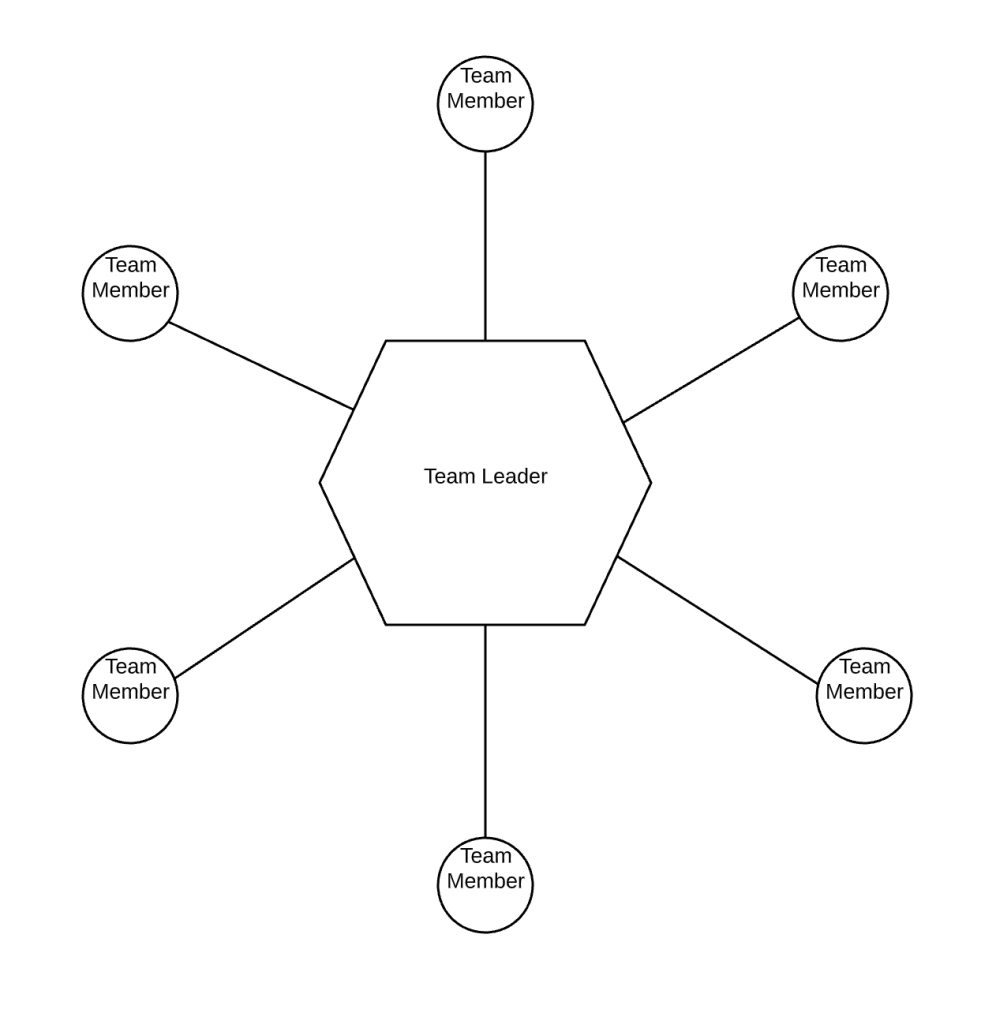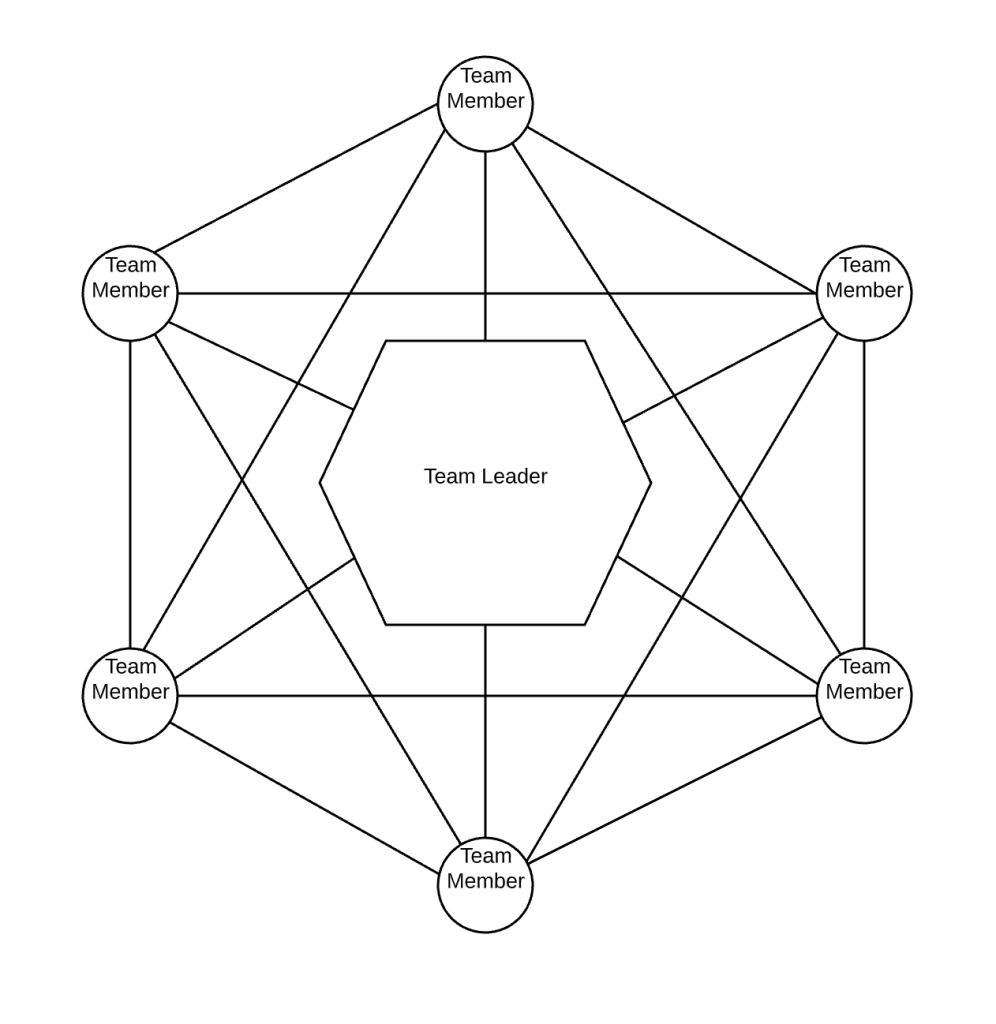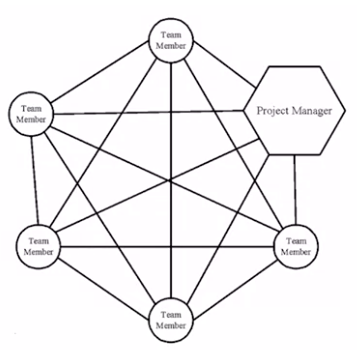I don’t want to sound cryptic, but the recent worldwide pandemic has definitely redefined how the teams operate and do their work.
Regardless of the work specifics, all teams go through a natural process of development and it is my goal in this article to present a simple framework which you can use to assess in what stage is the team you are part of. You can then use this insight in order to work on specific areas in order to improve the teamwork of your team and bring your collaboration to the next level and efficiently execute all tasks ahead.
1) Forming stage
As the name implies, this is the stage in which your team has just been formed. People don’t know each other, project or client is new and team members are just about to start working together. This can be depicted as the following picture:
In this stage, almost everything goes through the team lead. They are coordinating how tasks are distributed, who can help whom, how and when communication with the client is done and basically everything related to deliveries and service to the clients.
This is the most challenging part of the project, as people still don’t know who in the team knows what (team’s skill-set), so it is important to hold regular internal meetings, so people can get to know each other. Being aware what every team member brings to the table is important, as it will allow everyone to get the information or assistance they need very quickly.
Also, managerial load on the leader is big in this stage, as they are resolving all task issues and organizing everything.
In this stage it is very important to build psychological safety, as it will impact the whole subsequent teamwork ativities.
Once the team matures enough, is morphs into the next stage.

2) Storming stage
In this stage, team members start to share their ideas openly with each other and are becoming more efficient in their task execution. Everyone has become adjusted to the general modus operandi and there is enough psychological safety in the team. Picture that depicts this stage is:
Not everyone is still equally connected to everyone and team lead is still in the center of activities, but people already talk between each other, often independently of their lead. Team leader should encourage active cooperation between team members, as it allows efficient task deliveries, as well as enforcing relationship building between team members.
Note that conflicts may arise in this stage – hence the name – and the leader should facilitate open communication and freedom of speech, so that everyone can get on the same page.
After some time, the next stage of team development occurs.

3) Norming Stage
At this point, everyone has figured out how everything works: reporting, communication, what are the typical challenges, who can help with what and knowledge sharing is actively done. This stage can be depicted with the following picture:
Many problems are solved without team leader even being aware, everyone is regularly talking with everybody else and synergy in the team is very high. In addition, team members are very efficient in executing their tasks, they know how to share their own ideas of how something should be done and basically the whole team is working towards the common goal.
Team lead is still in the center of activities, ensuring that everything is being executed smoothly, but their involvment is significantly smaller than in previous stages.
For a long time I have thought that this is the peak of team work, in terms of performance, but it turns out there is yet another level above.

4) Performing Stage
Once cohesion, synergy and trust in team reache their highest levels, and when people are very familiar with basically everything regarding the project, team leader can displace himself from the center of activities:
At this stage, team has solved so many problems and challenges, that whatever comes by, they know how to deliver the results. In my personal experience, reaching this stage can take up quite a long time, depending on the project, people in the team and requirements to be met. That’s not saying it’ impossible to achieve this stage earlier.
The role of team leader in this case, aside from coordinating parts of the comunication with the clients, is basically the same as every other team member – doing their own task. In this stage team leader may allocate more of his time to collective learning and development within the team.

Conclusion
My goal was to present this very simple, yet powerful, team development framework. We all know that in reality not everything is as simple or can be defined easily, but having the model to use, helps a lot.
Team leaders can use this framework to assess in what stage is their team and then act on required actions, to bring it to the next level. In the end, it will bring better results towards the clients, better atmosphere in the team and happy team members, who learned a lot and managed to grow.




